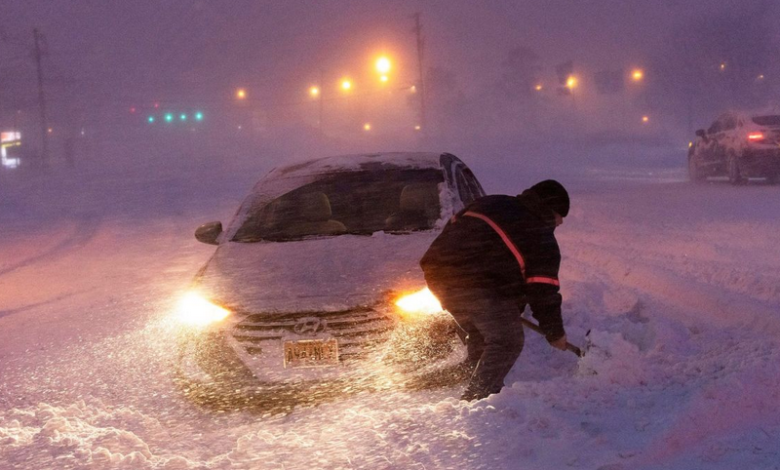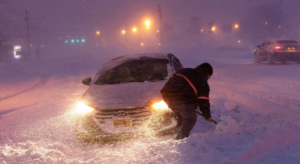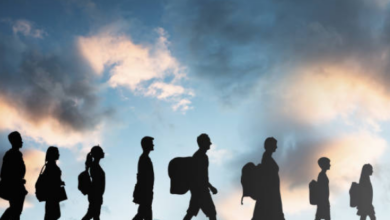Winter storm will impact most states according to National Weather Service


A major winter storm and cold blast is predicted to impact nearly every state and bring what the National Weather Service is calling a “once in a generation type event” that will cripple travel on some of the busiest travel days of the year.
“The strengthening storm will bring more than a foot of snow and possible blizzard conditions to the Midwest,” the weather service warns of “life-threatening” wind chills for millions.
More than 87 million people are under winter weather alerts and more than 90 million are under wind chill alerts. The alerts spread across 37 states, reaching as far south as the Texas/Mexico border.
This Christmas will be the coldest in approximately 40 years for parts of the Plains and Midwest due to the cold weather sticking around for the Christmas weekend.
As heavy snow falls across much of the Rockies, the Northern Plains and into the Midwest, the storm will strengthen over the Northern Plains through the day. Roads that are slick will cause headaches with travel and delays at airports in places such as Minneapolis, Omaha, and Rapid City.
The weather service office in Twin Cities stated that this system will bring 5 to 9 inches of light fluffy snow across the region, with the highest amounts just north and west of the Twin Cities. The high winds won’t kick in until Thursday, while snow will steadily fall across the region.
On Wednesday, Denver’s high will be 47 degrees, but by Thursday morning, the temperature will have plummeted to minus 14. The weather service reports that this is the city’s coldest day in 32 years.
On Thursday, travel will be more difficult than usual. The Midwest is expected to be hit extremely hard by the storm, with heavy snow and strong winds. Western Minnesota will face potentially deadly wind chills as well as blizzard conditions Thursday and Friday.
“The weather service said that whiteout conditions are expected during that time, making travel very difficult or impossible.” “If you are stranded in wind chills in the range of 30 to 45 below zero, this event could be life-threatening.”
2 to 4 inches of snow and blizzard conditions with winds gusting as high as 50 mph are forecast for Chicago.
The weather service office in Chicago warned that the quick development of dangerous conditions Thursday afternoon could have significant impacts on the evening peak travel window.
Additionally, strong winds in the Midwest may knock out power lines, especially in areas where heavy snow fell last week and is already weighing down tree branches. As temperatures plummet to well below freezing, this will leave millions finding a way to stay warm.
On Thursday, snow could fall as far south as Jackson, Mississippi, Memphis, Tennessee, and even Birmingham, Alabama. For most of the southern cities, little to no accumulation is expected; however, Nashville could pick up about an inch of snow.
Because in addition to snow covering roadways, low visibility could make air travel dangerous, United, American, Delta, Southwest and Jet Blue have issued travel waivers for dozens of airports across the country from the South to the Northeast in anticipation of what will be a week of travel nightmares.
The storm is expected to become a “bomb cyclone” Thursday evening and will continue into Friday. A bomb cyclone is a storm that rapidly intensifies and drops 24 millibars of atmospheric pressure in 24 hours.
A “once-in-a-generation” event is expected as the storm reaches the pressure equivalent of a Category 3 hurricane when it reaches the Great Lakes, according to the weather service.
”
This is a case where snow totals may not give the full story. Even small snow amounts can cause poor visibility and slick spots on roads when combined with very strong wind gusts and plummeting temperatures. The weather service explained that the sudden arrival of these conditions can increase the danger.
The storm will be over the Great Lakes on Friday and will continue to produce heavy snow across much of the Midwest. More than a foot of snow could fall in some areas of Michigan by Friday, making travel difficult.
Lengthy airport delays and travel troubles will be added to by heavy rain blanketing much of the I-95 corridor.
30 to 40 mph winds will continue to blow across much of the Midwest and into the Northeast, even in places where the snow has ended.
New England will get a quick shot of snow and windy conditions Friday night into Saturday morning.
Laces that escape the snow, won’t escape the cold. The coldest air will begin in eastern Montana and continue through the Dakotas on Thursday morning. These places will have temperatures 40 degrees below normal. Wind chills as low as 50 degrees below zero are expected with the combination of cold temperatures and windy conditions.
The temperature in Rapid City will feel like 45 degrees below zero on Thursday morning. The wind chill in Chicago is expected to be 30 degrees below zero on Friday morning.
The weather service office in Bismarck warned that the dangerously cold wind chills could cause frostbite on exposed skin in as little as 5 minutes.
Dangerously cold weather will extend even to the South. On Saturday morning, the wind chill in Nashville and Atlanta will drop to minus 11, and Birmingham will feel like minus 5.
Between Friday and Monday, both Jackson and Birmingham will spend more than 80 hours below freezing. Between Thursday and Saturday, Houston could sit below freezing for 46 hours.
The cold temperatures will stay through Christmas weekend, before finally increasing next week.





